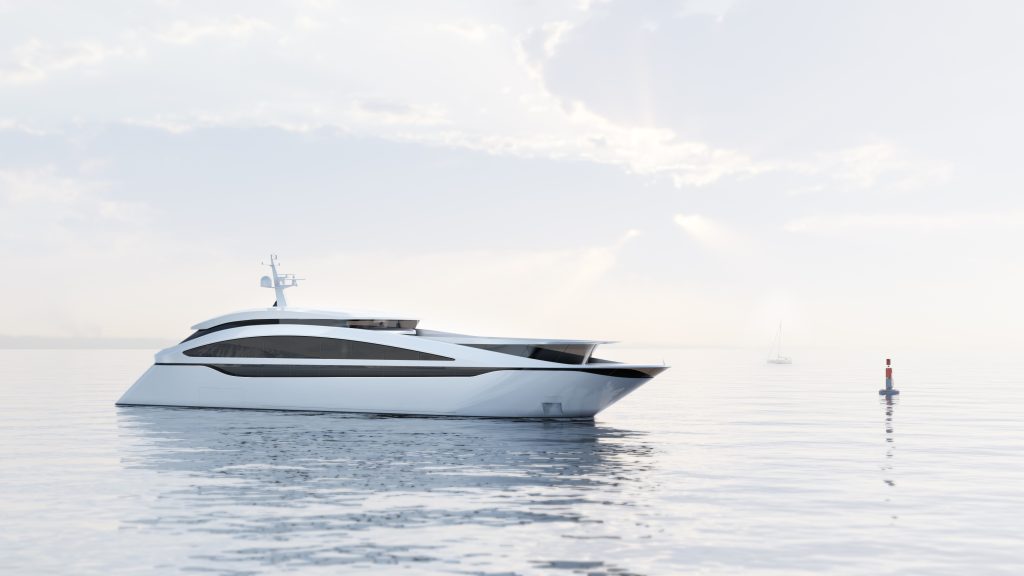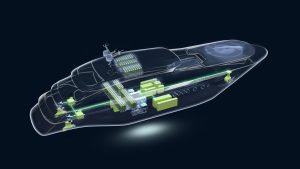Zero-emission yachting – expedition trips for passengers and researchers

Can we attract environmentally conscious passengers by offering low emission cruising that also supports science? Can we design a feasible solution to marry these aspects? Are responsible trips to sensitive areas possible?
Reducing emissions is a dominating subject in most of our interactions with Clients and partners during recent years. We have seen all sectors of the maritime transport and operations investigating multiple solutions for energy efficiency and low emissions. Regulatory compliance and customer pressure can easily be identified as the two main drivers. One sector has seen the latter aspect dominating the discussion – namely cruising and yachting.
Quite special and growing market
Customer pressure is especially strong in the more exclusive ship types – expedition ships and yachts. A lot of Clients in this market are ready to pay extra for a reduced environmental footprint of their trips, especially considering often pristine areas they travel to – imagine polar fjords of Svalbard or coral reefs of southern oceans. As we have seen a growing demand for new vessels in this sector, we decided to develop a concept design of the low-emission expedition superyacht.
What is the plan?
Based on our ongoing market review we took a closer look at a number of existing and planned vessels, both from a relatively small group of expedition superyachts as well as some of the growing number of small expedition cruise ships. This helped us define a basic set of required characteristics:
- Superyacht for 12 passengers
- Displacement steel monohull (possible aluminum structrure)
- Large range/autonomy (>6000nm, 40 day)
- Compliance with Polar Code and ice class
- Ability to operate with zero-emission for extended periods
- Helicopter operations possible
- Some research facilitites onboard
In a way we have defined a dream ship for many of us – the one we would be excited to board and cruise ourselves to some exotic locations. This is not always the case in our everyday jobs, but such personal connection helped us engage much more in the design and made the development process a bit more fun.
How we worked on it?
Our work in the research and development team helps us gain new skills, stay in touch with recent industry trends and follow the changing needs of our clients, including ship owners and shipyards. One challenge we often face is how to combine our development work with regular commercial assignments. It requires flexible personal assignments and unusual splitting of typical ship design activities. Such situation sparked our interest in some management approaches that are not typically used in ship-building environment.
Making use of the fact that the development work is not bound by large investments or construction schedules, we were able to be more flexible with the delivery timeline, but still needed to ensure that the work is performed to the highest standards and with proper interdisciplinary coordination. This led us to adopt a leaner approach to project management, namely the agile methodology, with parts of the scrum approach. This way of managing the work is broadly used in IT projects, but we figured out it can work well in the development of novel ship design. By dividing the work into smaller chunks of roughly 1-week work and holding regular review meetings to assess the design needs and review who is available during next week, we were able to use the time that our experienced colleagues had available in between their commercial assignments. In doing so, we gathered the maximum experience available in our company to provide the most suitable solutions required for our expedition superyacht.
Our design
One of the key decisions to be made early in the design process was a selection of a power generation solution that would be feasible, considering the assumptions listed above. Initially it seemed that methanol-powered engines would be best suited for the job, but two big challenges made us look at other solutions. Key obstacles were availability of large quantities of methanol in small, remote ports and availability of suitable engines – all currently available methanol-fueled engines were too large for our application.
We therefore switched to a hybrid system that will combine:
- 2 diesel-driven generators of 1300 kW each (using MDO, with SCR) – for long crossings and charging batteries (option)
- 2 battery sets for total of 5250 kWh – for zero-emission operations up to 6h at cruising speed
- 4 sets of hydrogen fuel cells for total of 1130 kW, coupled with 222 H2 bottles (@500bar, 1000kg total) for zero-carbon cruising for 13h
All these would be combined for a hybrid diesel-hydrogen-electric system coordinated by a power management system (PMS) that will ensure the best utilization of energy in all operating scenarios. The main elements of this system are visible in the figure below:

Apart from a novel propulsion system, we wanted to create a unique external geometry, with wheelhouse island in the extreme forward part of the vessel and accommodation space in the mid and aft areas. Keeping in mind the potential scientific or educational use of the vessel, we have reserved some space for a library, lecture/meeting room and laboratory space. Typical boat/waterjets garage can be used for launching scientific probes or RIBs and vehicles for land excursions. Large viewing lounge forward, beneath the wheelhouse, will ensure panoramic views. The current arrangement assumes 6 double cabins for a luxurious experience, coupled with typical common spaces for guests, including a swimming pool, saloon, dining area, bar and wellness space.
What makes us confident in the future of this design?
What was the main reason we created this design? It was mainly to propose an interesting functional combination that connects leisurely activities with responsible education and research. Due to our previous experience in superyacht and cruise ship fields, we are convinced that we are able to provide an engineering solution to ensure such a connection is technically and commercially feasible.
Collaboration for a unique yachting experience
We recently joined forces with a dynamic team of designers from Northern Works. The exterior shape underlines our commitment to the environment that guided us in this project. This is why we used a bit of biomimicry in a silhouette that resembles a polar bear.
Want to read more? See also our other published blogs.
